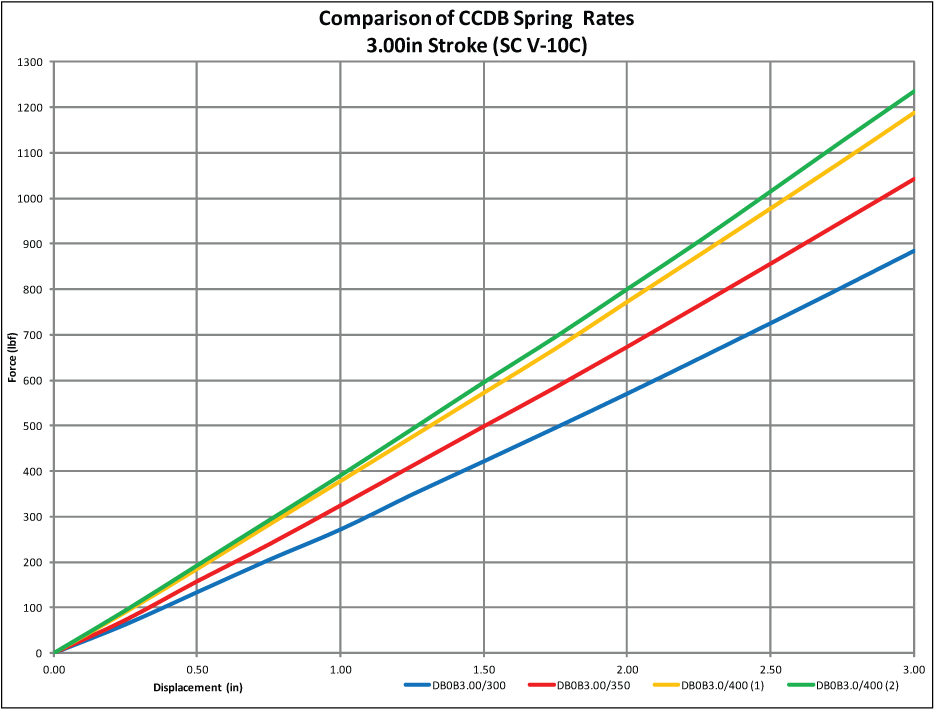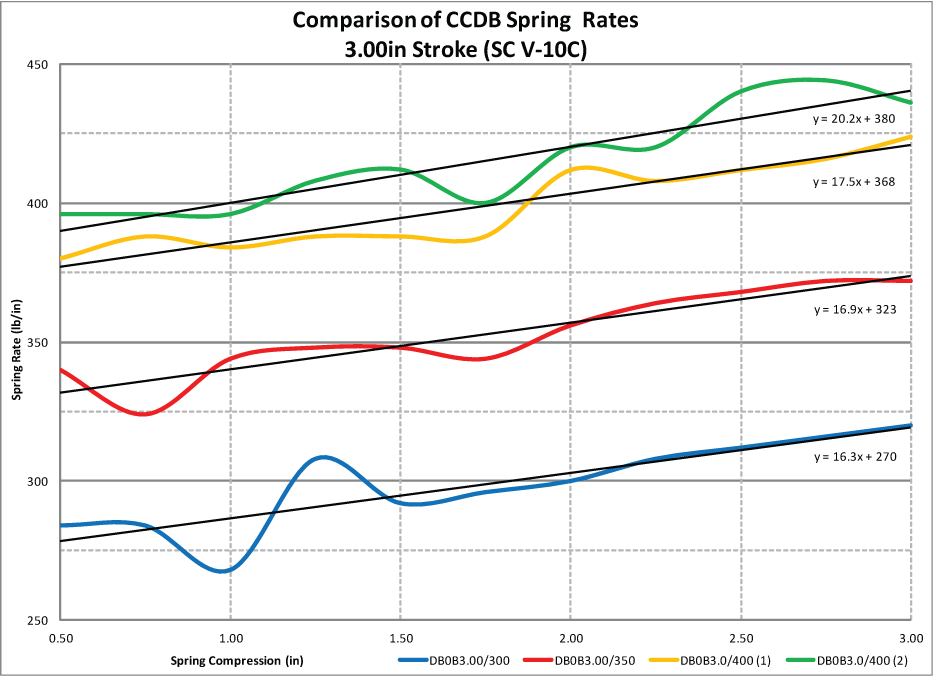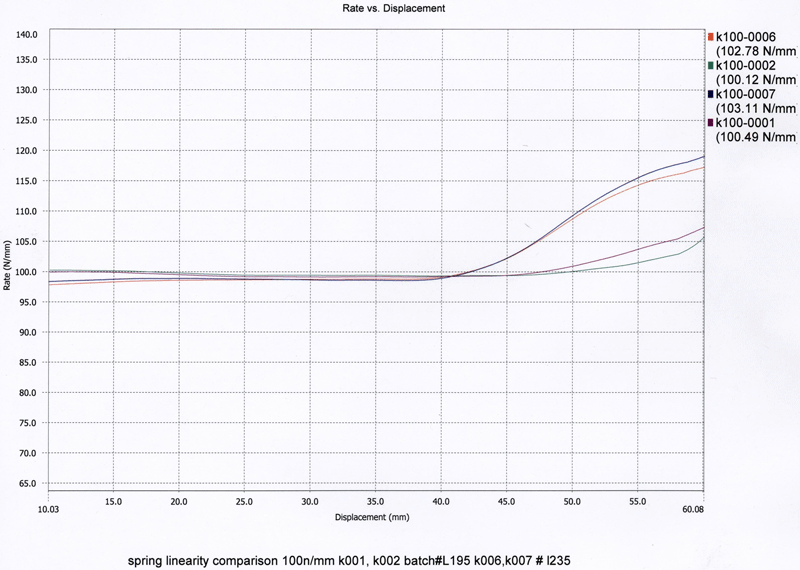Ask anybody that has studied physics about springs. They’ll tell you about Hooke’s Law, the linearity of coil springs, and brush them off as the most simple topic. They probably got great grades. Some of them probably got masters degrees or PhDs. The problem is is that they don’t know what they are talking about and are wrong. Ha!
Springs are awesome and so cool. For bicycle and motorcycle folk, they can mean the difference between a good/fast time and not so much. Other than tires, springs are the most important part of any suspension system and deserve considerable attention.
I’ve written so much in the past about springs, but I’m going to again. Why? Simple, I need content (Ha!) but also because we need constant reminders as to why springs need to always be put under a microscope.
Today, I’m talking about the most simple spring topic there is, rating them.
Rating springs is rarely done by most bicycle and motorcycle users. I understand that. There is some expensive equipment and some understanding needed for a tiny bit of information. What is really criminal though is how many ‘experts’ don’t rate springs. This pisses me off as I’ve seen too many bikes just murdered by these people.
This week we sorted the springs out for Mary’s V-10c. She initially ordered her CCDB with a 300 lb/in spring. That was way off. We ordered a few more springs to test. I prefer to order any damper with a minimum of 3 springs. This gives me some range of tunign options to test with. Springs are extremely cheap and it is critical that you end up with the correct rate.
Here’s how the springs we got measured on my Longacre electronic coil spring tester;
It’s obvious that the springs don’t seem to be ending up where you would expect. We can see that graphically like this:
Bicycle industry springs are pretty bad as performance springs go. In motorsport, you would expect a spring to measure within 2% of the labeled value and behave linearly until past the designed stroke, they then tend to go wildly progressive. That’s not a big deal as long as the spring is not used in that range. After that, you then shop for the lightest spring. Honestly, I’ve rated a lot of motorsport springs and the vast majority of them will rate within 1% of their labeled rate. Öhlins tends to produce the finest springs in general when weight is factored in. Hyperco spring arn’t as light as Öhlins springs and sometimes don’t stay as linear as long, but they are priced a lot better and work very well.
Bicycle industry springs are really horrible in many ways. I’ll look at just two factors here.
* Accuracy: Fox promises to supply springs within 15% of their labeled value. You think that’s bad? Actually they often measure up to 25% off. You can expect that any bicycle spring you purchase will be about as bad. Why does this matter? Simply put, you can’t tune your suspension without measuring each spring you use (nobody does). This is because of something called coil rate overlap. Assume two springs; a 400 lb/in labeled spring and a 450 lb/in labeled spring. The rider is looking for a stiffer spring. She swaps out the 400 for the 450 and the bike works worse. Why, imagine the 400 is actually 15% high and the 450 is 15% low. That means that she actually took out a 460 lb/in spring and replaced it with a 383 lb/in spring. This happens all the time, even if you go to Fox’s race support truck since they don’t bother to rate springs either. Fox also refuses to rate springs you order from them. Ugh! This is one of the #1 reasons why people get lost tuning suspension.
* Precision: Specifically with regard to linearity. While it’s fine for a spring to go progressive after the range of the shock stroke (they all do), it’s bad if it happens prior to that. More important than that, the springs rate should be linear in that used range. This is pretty important stuff. Linkages are used to tune for rising or falling wheel rates not springs. There are progressive springs sold, but only a very few people have ever made much good use of them (the only situation I can even recall is Miguel DuHamel’s fork springs). Commercial progressively wound springs are generally a marketing one-size-fits-all solution sold to noobs. The next graph shows that these springs aren’t even linear in the usable range. They are progressive.
A note on the graph below. The graph of the rates look pretty wild but that shouldn’t be a distraction. The trend line is more important to focus on. Several factors contribute to the erratic behavior. The corse sample rate, the springs unwinding, and the accuracy of my measureing of travel and force. Regardless, the trend line resolves these elements.
Great! We have 4 progressive springs!! (dang!)
Here is a graph showing a few Ohlins motorsport springs that were dynamically rated on a Rohig shock dyno by Dan Kyle. Note that they are nice and liniar until they pass 40mm. That’s fine since they wont be used passed that range. Certainly there is a big difference between the behavior of these four springs. If the lowest one is the lightest, I’d choose that one.
Regarding my graph of the bicycle springs, you can see that all four of these springs start well below their labeled value and end up well above. This is even while removing the first 0.500″ of travel (known to be odd as the springs settle). This is pretty horrible but at least we now know what we have. They can be approximated as their mid stroke value, but still it’s a shame to do this.
At the end of the day, we will probably settle on using the 400#1 spring. She’s ridden this spring and has had good results with it. Also, as this spring approximates a true 400# spring, we can order a titanium spring now with more confidence that the behavior of the two springs will be similar. High end titanium springs will be far more accurately produced that commercial steel springs.




